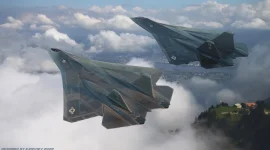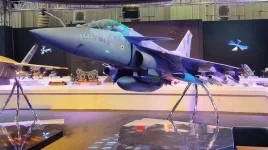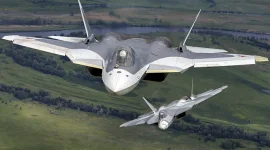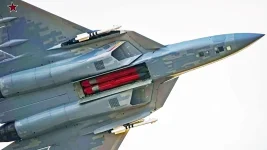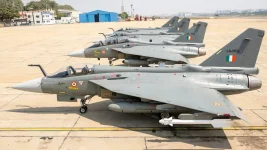- Views: 3K
- Replies: 6
India's ambitious fifth-generation stealth fighter program, the Advanced Medium Combat Aircraft (AMCA), is set to feature a groundbreaking, indigenously developed non-toxic green coating, marking a significant stride in the nation's push for self-reliance in defence.
This innovative technology represents a major leap, combining state-of-the-art military capabilities with environmental responsibility.
The adoption of this eco-friendly stealth coating underscores a commitment to sustainable manufacturing within the 'Atmanirbhar Bharat' initiative, ensuring that India's future air superiority is achieved without compromising on ecological safety or performance.
The AMCA project, managed by the Defence Research and Development Organisation (DRDO), received its formal clearance from the Indian government in May 2025, paving the way for prototype development.
With a budget of approximately Rs 15,000 crore, the program aims for a maiden flight by 2029 and seeks to have the aircraft fully operational and inducted into the Indian Air Force by 2034.
Envisioned as a single-seat, twin-engine, all-weather multirole aircraft, the AMCA is designed to perform a variety of missions, including deep-penetration strikes, air superiority, and intelligence gathering. It is slated to eventually replace the IAF's aging Sukhoi Su-30MKI fleet and will feature advanced elements like internal weapons bays and supercruise ability.
What distinguishes the AMCA is its comprehensive approach to stealth. The aircraft's design incorporates not only a specially shaped airframe to minimize its radar signature but also advanced methods for managing heat emissions.
The integration of the new green coating is a critical component of this multi-layered strategy, which is designed to make the fighter jet exceptionally difficult for enemy radar and sensors to detect, thereby greatly increasing its survivability in hostile airspace.
This pioneering stealth coating, named Anālakṣhya, is a metamaterial-based surface cloaking system developed by researchers at the Indian Institute of Technology Kanpur (IIT-Kanpur). The name, derived from Sanskrit for "invisible," accurately describes its function.
Launched in November 2024, the technology utilizes sophisticated metamaterials engineered to absorb a wide range of radar frequencies, particularly from Synthetic Aperture Radar (SAR) systems, rendering military assets effectively invisible.
Crucially, Anālakṣhya is the first coating for an Indian fighter jet to be completely free of the toxic chemicals found in conventional radar-absorbent paints.
The technology functions by absorbing over 90% of incoming radar waves and converting them into minute amounts of heat, which dissipates harmlessly.
More than 90% of the materials used in its production are sourced from within India, significantly reducing reliance on foreign suppliers and bolstering the domestic defence industry.
The coating's effectiveness was validated through extensive testing between 2019 and 2024, confirming its stability and performance across a wide range of operational conditions, including extreme temperatures and high velocities.
The technology has been licensed to Meta Tattva Systems Pvt. Ltd. for large-scale production, addressing the maintenance challenges posed by the toxicity and rapid degradation of legacy coatings used on aircraft like the MiG-29.
The eco-friendly composition of the Anālakṣhya coating sets a new global standard for green defence technology.
By eliminating harmful volatile organic compounds (VOCs) and heavy metals prevalent in traditional stealth materials, it mitigates serious health risks for manufacturing and maintenance personnel and prevents environmental contamination during disposal.
This focus on sustainability positions India as a forward-thinking leader in the development of responsible defence solutions.
The integration of this indigenous technology into the AMCA program places India in an exclusive group of nations with the capability to produce their own fifth-generation stealth fighters, alongside the United States (F-35), Russia (Su-57), and China (J-20).
In a region with complex geopolitical dynamics, the AMCA's advanced stealth will provide the Indian Air Force with a significant tactical advantage.
While challenges such as engine development and scaling up production remain, DRDO chief Samir V. Kamat has expressed confidence in meeting the 2035 induction timeline.
With progress evident in completed wind tunnel tests and the ongoing work on full-scale prototypes, the AMCA is firmly on course to redefine India's air power for decades to come.

